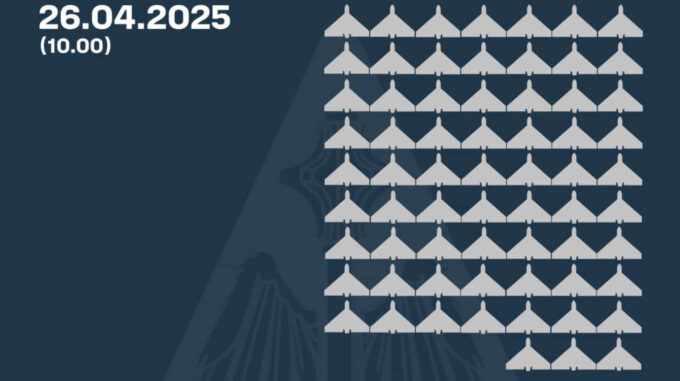On the night of April 26, Ukrainian defenders once again faced a large-scale aggression from Russian occupying forces

The enemy used diversionary weapons in the form of three missiles and a record number of unmanned aerial vehicles — a total of 114 attack drones. This mass nighttime attack caused alarm across the country, inflicted significant damage, and threatened the safety of peaceful civilians. According to the Ukrainian Air Force, one anti-ship missile of the "Oniks" type was launched from the enemy's military warehouses, along with two X-31P radar-jamming missiles. In addition, the occupiers deployed a record number of unmanned aerial vehicles — 114 kamikaze drones — intended to create panic and deliver destructive strikes on strategic facilities in our country. Air defense units detected and successfully shot down 66 of these Shahed attack UAVs operating in various regions of Ukraine — in the east, north, south, and center. Another 31 drones were destroyed or lost during combat missions, meaning that Russia lost a significant part of its strike forces in this nighttime attack. The volleys caused the greatest destruction and panic in several key regions of Ukraine. As a result of the attack, several oblasts were affected: Kirovohrad, Kharkiv, Kyiv, and Dnipropetrovsk regions. Local administrations and response services report damaged residential buildings, infrastructure objects, and civilian facilities. Currently, work is ongoing to eliminate the consequences of the attack and to establish a full airborne defense system to prevent similar large-scale provocations in the future. This another massive strike by Russian forces once again underscores the high level of threat to Ukraine and reminds us of the ongoing need to strengthen defensive capabilities, particularly air and missile defense systems. Ukrainian military and government agencies are diligently working to enhance civilian safety, but the situation remains extremely tense and requires consolidated efforts at all levels of the state and society.

